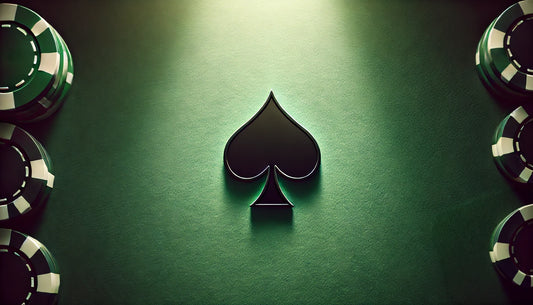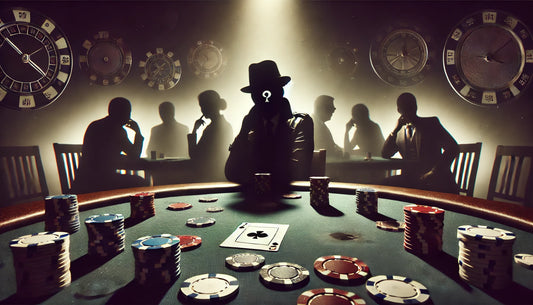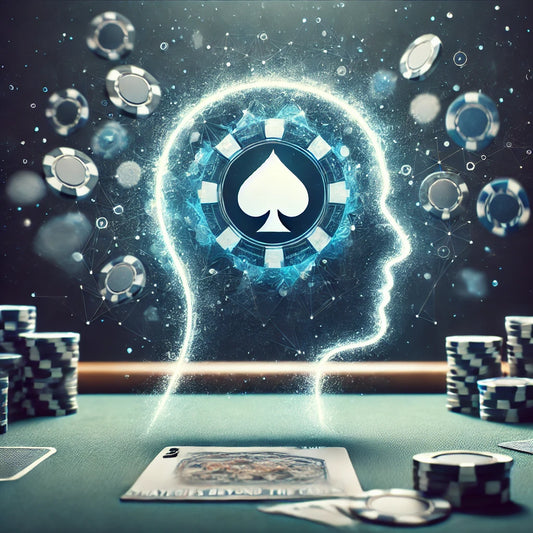Poker is often described as a game of skill, strategy, and a bit of luck. However, there is one critical aspect that differentiates great players from the rest: the art of bluffing. Bluffing in poker is not merely about placing a risky bet; it’s about understanding human psychology, manipulating perceptions, and mastering the subtle cues that influence decision-making at the poker table. In this blog post, we will delve deep into the psychology of bluffing, exploring how you can develop this essential skill to become a more formidable poker player.
Understanding the Psychology Behind Bluffing
At its core, bluffing is about creating a false narrative that convinces your opponents to make decisions that benefit you. The psychology behind bluffing revolves around the ability to manipulate your opponent's perception of reality, leading them to believe in a version of events that favors your hand, even when the opposite might be true.
Key to this is understanding the emotional state of your opponents. A stressed or frustrated player might be more prone to calling a bluff out of desperation, while a confident player might be more difficult to deceive. Recognizing these emotional cues allows you to tailor your bluffing strategy effectively.
Another critical aspect of bluffing is mastering body language. Experienced players can often pick up on subtle tells—unconscious physical cues that may reveal the truth about your hand. To bluff successfully, you must control your own body language, masking any nervous ticks or tells, while simultaneously reading and interpreting those of your opponents.
Types of Bluffs in Poker
Bluffing in poker isn't a one-size-fits-all tactic. There are various types of bluffs, each suitable for different scenarios and opponents. Here are some of the most common types of bluffs:
- Pure Bluff: This is when you bet or raise with a hand that has little to no chance of winning unless your opponent folds. This type of bluff relies purely on your ability to convince the opponent that your hand is stronger than it is.
- Semi-Bluff: A semi-bluff occurs when you bet with a hand that isn't the best currently but has the potential to improve. This is less risky than a pure bluff because you have a backup plan if your bluff gets called.
- Continuation Bluff: Often used by players who raised pre-flop, this bluff involves continuing to bet on subsequent streets regardless of the strength of your hand. The goal is to maintain the appearance of a strong hand.
Tips for Mastering the Art of Bluffing
Bluffing is a nuanced skill that requires practice, insight, and a deep understanding of both the game and your opponents. Here are some detailed tips to help you refine your bluffing technique:
- Know Your Opponents: Understanding your opponents' playing styles and tendencies is crucial. Some players are more likely to fold under pressure, while others might be more inclined to call your bluff just to test you. Adjust your bluffing strategy based on the type of player you're up against. For instance, bluffing a tight player (who only bets with strong hands) might be more effective than bluffing a loose player (who bets more frequently with a wide range of hands).
- Timing is Everything: The timing of your bluff can significantly impact its success. The best bluffs often occur when the stakes are high, and your opponents are feeling the pressure. Bluffing too frequently can make you predictable, while bluffing too seldom might result in missed opportunities. Pay attention to the game’s flow and choose your moments wisely—sometimes, a well-timed bluff can turn the tide in your favor.
- Maintain a Consistent Story: Your betting patterns should tell a consistent and believable story. If your actions don’t align with the narrative you’re trying to sell, your bluff is likely to be called. For example, if you're representing a strong hand, your bets should increase logically as the hand progresses. Inconsistencies, such as a sudden large bet after a period of cautious play, can raise suspicion.
- Practice Emotional Control: Bluffing effectively requires a calm and composed demeanor. If you’re nervous or anxious, your opponents may pick up on these cues. Maintain control over your body language and facial expressions, and remain as unreadable as possible. Remember, even the most subtle shifts in behavior can be a giveaway.
- Bluff with Purpose: Don't bluff for the sake of bluffing. Each bluff should be calculated and purposeful, taking into account the table dynamics, your position, and the potential reactions of your opponents. Effective bluffing is about quality, not quantity.
Advanced Bluffing Techniques
Once you've mastered the basics of bluffing, you can start experimenting with more advanced techniques:
- Double Barreling: This involves bluffing on multiple streets, such as continuing to bet after the flop and turn, to reinforce the narrative of a strong hand. This technique works well against opponents who are observant and analytical.
- Reverse Bluffing (Slow Play): This technique involves playing a strong hand weakly to induce a bluff from your opponents. By checking or betting small, you lure them into believing they have the upper hand, only to reveal your strength at the last moment.
- Polarized Bluffing: This involves making large bets that represent either the nuts (the best possible hand) or nothing at all. Polarized bluffs can be highly effective but also risky, as they force your opponents into a difficult decision.
Conclusion
Bluffing is more than just a tactic in poker; it's an essential part of a comprehensive winning strategy. By mastering the psychology of bluffing, you can keep your opponents off balance, control the pace of the game, and ultimately increase your chances of winning. Remember, successful bluffing is a delicate balance between risk and reward, requiring insight into your opponents, consistency in your actions, and the ability to stay cool under pressure.
Whether you're a novice or an experienced player, integrating these advanced bluffing techniques into your gameplay can help you become a more unpredictable and formidable opponent. Practice these strategies, refine your skills, and watch as your bluffing abilities transform your poker game. Good luck at the tables!








